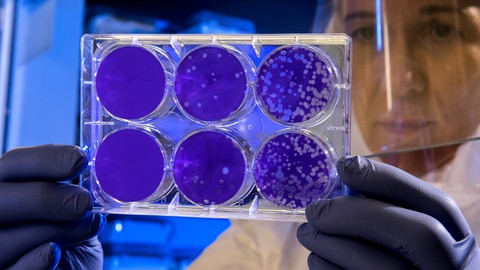
TCA Cycle and Photosynthesis MCQ Practice (Bio Chemistry)
-
TCA Cycle -
Photosynthesis and Respiration
- Anyone who wants to learn Bio Chemistry
- Advanced Bio Chemistry
- TCA Cycle
- Photosynthesis and Respiration
The citric acid cycle (CAC) – also known as the TCA cycle (tricarboxylic acid cycle) or the Krebs cycle – is a series of chemical reactions used by all aerobic organisms to release stored energy through the oxidation of acetyl-CoA derived from carbohydrates, fats, and proteins, into adenosine triphosphate (ATP) and carbon dioxide. In addition, the cycle provides precursors of certain amino acids, as well as the reducing agent NADH, that are used in numerous other reactions. Its central importance to many biochemical pathways suggests that it was one of the earliest established components of cellular metabolism and may have originated abiogenically. Even though it is branded as a ‘cycle’, it is not necessary for metabolites to follow only one specific route; at least three segments of the citric acid cycle have been recognized
The name of this metabolic pathway is derived from the citric acid (a type of tricarboxylic acid, often called citrate, as the ionized form predominates at biological pH) that is consumed and then regenerated by this sequence of reactions to complete the cycle. The cycle consumes acetate (in the form of acetyl-CoA) and water, reduces NAD+ to NADH, and produces carbon dioxide as a waste byproduct. The NADH generated by the citric acid cycle is fed into the oxidative phosphorylation (electron transport) pathway. The net result of these two closely linked pathways is the oxidation of nutrients to produce usable chemical energy in the form of ATP
Photosynthesis is a process used by plants and other organisms to convert light energy into chemical energy that can later be released to fuel the organisms’ activities. This chemical energy is stored in carbohydrate molecules, such as sugars, which are synthesized from carbon dioxide and water. In most cases, oxygen is also released as a waste product. Most plants, most algae, and cyanobacteria perform photosynthesis; such organisms are called photoautotrophs. Photosynthesis is largely responsible for producing and maintaining the oxygen content of the Earth’s atmosphere, and supplies most of the energy necessary for life on Earth
Cellular respiration is a set of metabolic reactions and processes that take place in the cells of organisms to convert chemical energy from oxygen molecules or nutrients into adenosine triphosphate (ATP), and then release waste products. The reactions involved in respiration are catabolic reactions, which break large molecules into smaller ones, releasing energy because weak high-energy bonds, in particular in molecular oxygen, are replaced by stronger bonds in the products. Respiration is one of the key ways a cell releases chemical energy to fuel cellular activity. The overall reaction occurs in a series of biochemical steps, some of which are redox reactions. Although cellular respiration is technically a combustion reaction, it clearly does not resemble one when it occurs in a living cell because of the slow, controlled release of energy from the series of reactions
These questions will give you basic idea for Examination Preparation and/or interview on TCA Cycle, Photosynthesis and Respiration.
Please Note:
- These questions are only for practice and understanding level of knowledge only. It is not necessary that these questions may or may not appear for examinations and/or interview questions
- In this practice test, because of large amount of questions (around 70 questions) some of questions may have repeated
- I had to put as 70% pass rate because there may also be wrong answers from my side
- Bio Chemistry
- TCA Cycle
- Photosynthesis and Respiration






